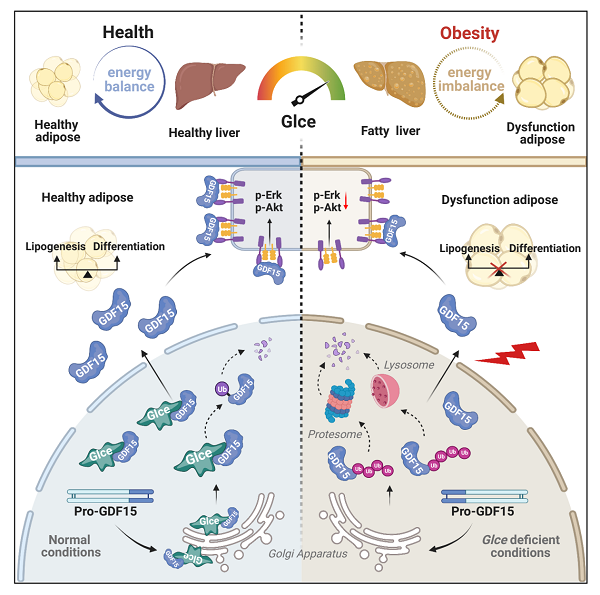As the central hub of lipid metabolism in living organisms, the liver is mainly dependent on the secretion of hepatic factor to realize the signal flow and regulatory feedback with other tissues and organs, especially in the process of energy metabolism, which plays an extremely important role. However, the regulatory mechanisms of lipid metabolism in the liver and the regulation of hepatic factor expression and secretion have not been fully elucidated. Glucuronyl C5-epimerase (Glce), an important isomerase for the synthetic modification of acetyl heparan sulfate proteoglycan (HSPG) glycans widely found in cell membranes, is highly conserved genetically, but its involvement in the development of obesity and its regulatory mechanisms are not yet clear.
On May 19, 2023, researchers from China published a research "Hepatic glucuronyl C5-epimerase combats obesity by stabilizing GDF15" in the Journal of Hepatology, reporting that hepatic glucuronyl C5-epimerase mediates the secretion of GDF15 to affect the homeostatic balance of hepatic lipid metabolism in the body.

The research team found that the expression of glucuronate C5 isomerase in the liver of obese patients with different body mass index (BMI) values was negatively correlated with BMI values, HOME-IR and other metabolic indexes. At the same time, the in vivo experiment of liver specific knockout Glce mice model showed that the thermogenic function of brown adipose tissue tissue was damaged, the differentiation degree of white fat tissue was increased, the blood glucose tolerance and insulin sensitivity of mice were significantly reduced, and the content of serum total cholesterol and triglycerides was increased, which aggravated the disorder of lipid metabolism induced by high-fat diet. Further combining with secretomics analysis, researchers found that in Glce knockdown or knockout mouse liver cell culture medium, the levels of growth differentiation factor-15 (GDF15) were reduced. In vivo, GDF15 protein supplementation can slow down the obesity and liver injury phenotypes caused by liver Glce deficiency, while overexpression of Glce or its enzyme active mutants in vivo can also weaken the weight gain induced by a high-fat diet in mice, Overdifferentiation of fat and progression of liver injury. Mechanically, the research team found that overexpression of Glce can promote the transformation of GDF15 precursor form to mature form, and Glce silencing not only reduces the generation of GDF15, but also further promotes the ubiquitination of K48 and K63 junction forms on GDF15 protein. The above results indicate that Glce in the liver can maintain energy metabolism homeostasis by affecting the secretion of GDF15 protein.
This study revealed the important role of a new metabolic regulator, Glce, in mediating liver fat "cross talk" signal transduction to regulate energy homeostasis, and deepened the understanding of the relationship between Glce in human liver and obesity or NAFLD/NASH and other metabolic diseases, suggesting that glucuronate C5 isomerase and its GDF15 signaling pathway may become a potential target for combating obesity.

Hepatic glucuronyl C5-epimerase combats obesity by stabilizing GDF15
Journal: Journal of Hepatology
Highlights:
l Hepatic Glce is attenuated in both obese individuals and HFD-induced obese mice.
l Hepatic Glce deficiency accelerates obesity progression which is abated by GDF15 treatment.
l Glce protects against obesity by facilitating mature GDF15 production and maintaining its ubiquitin homeostasis.
l Glce could serve as a novel potential target for obesity treatment.





